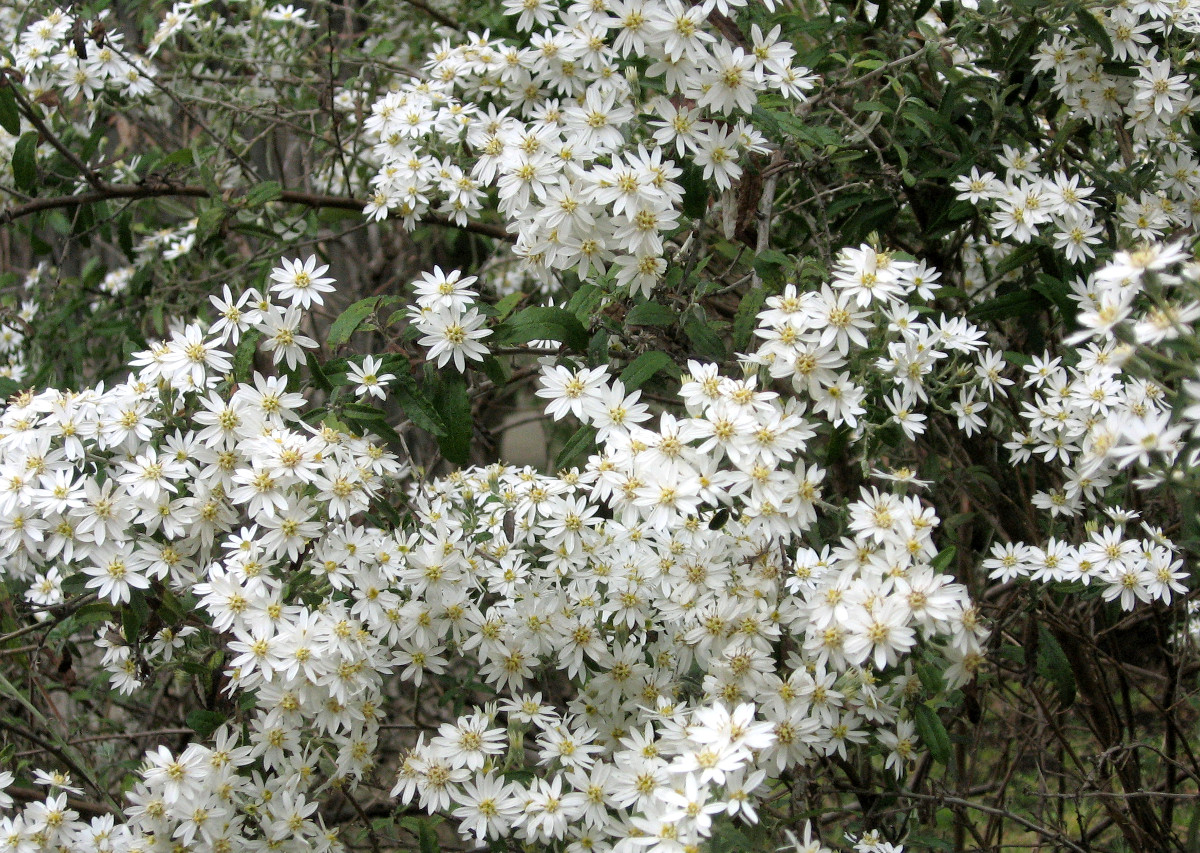Dies ist eine alte Version des Dokuments!
Olearia phlogopappa (Labill.) DC. - Asteraceae - dusty daisy-bush, alpine daisy-bush, Tasmanian daisybush, Tasmanischer Gänseblümchenstrauch
Shrub to 3m high, native to Australia, also cultivated as ornamental; leaves alternate, narrow ovate or obovate, dull grey-green above, whitish or yellowish underneath; flowers in clusters, 6-22, white, pink or mauve. https://en.wikipedia.org/wiki/Olearia_phlogopappa
„The shrub has a generally grey appearance from the coating of hairs on young growth and the undersides of the leaves, which are under 2.5cm long, narrow and with dentate edges. There is a strong musky odour, found also in other Olearia spp. and often in other members of the family Asteraceae. The flowers have a different scent, light and pleasant. “
http://www.anbg.gov.au/gnp/gnp2/olearia-phlogopappa.html
[Alpine Daisy Bush, Olearia phlogopappa (Labill.) DC., retrieved 2019-08-25]
„Organoleptically, the oils from the six clones under consideration were markedly different from one another. For instance, the desirable spicey, tomato-like properties were predominantly found only in one clone. This odour characteristic was also present in the other oils but was masked or over-ridden by other exotic fruity notes. In other cases, native bush, floral, or citrus notes were predominant in the oil.
The major components of the oil were identified as germacrene-D, bicyclogermacrene and spathulenol. In some instances, β-eudesmol or caryophyllene comprised the greatest part of the oil. However, the greatest contribution to the overall characteristic spicey odour was made by kessane and liguloxide. Minor components were not identified, but are also likely to be responsible for the complex aroma of the oil.“
[Dragar, Valerie Annette. Olearia Phlogopappa: aspects of clonal cultivation and essential oil characterisation. Diss. University of Tasmania, 1991]
„The composition of essential oil from Olearia phlogopappa clones collected from six locations in Tasmania was analyzed by GC/MS. The major components identified were β-caryophyllene, bicyclogermacrene, germacrene-D, liguloxide, kessane, caryophyllene oxide, spathulenol and α-, β and γ-eudesmols. The clonal variation in oil composition and odor is also described.“
[Dragar, V. A., C. Dragar, and R. C. Menary. „Odor and composition of Olearia phlogopappa essential oil.“ Journal of Essential Oil Research 5.4 (1993): 359-363]
„A clone of the Australian endemic shrub Olearia phlogopappa Labill. D.C., collected from Mt. Wellington, produces a highly aromatic essential oil. Liguloxide has been shown to be the component responsible for the characteristic tomato ketchup note associated with this oil. In addition, kessane, bicyclogermacrene, germacrene-D, spathulenol and caryophyllene oxide were isolated by HPLC and characterized by 1H- and 13C-NMR spectroscopy.“
[Dragar, C., V. A. Dragar, and R. C. Menary. „Identification of the key odorous component of an Olearia phlogopappa clone.“ Journal of Essential Oil Research 5.5 (1993): 507-511]

Olearia phlogopappa, Real Jardín Botánico de Madrid (2008) Author A. Barra
https://commons.wikimedia.org/wiki/File:Olearia_phlogopappa.jpg CC BY-SA 4.0
